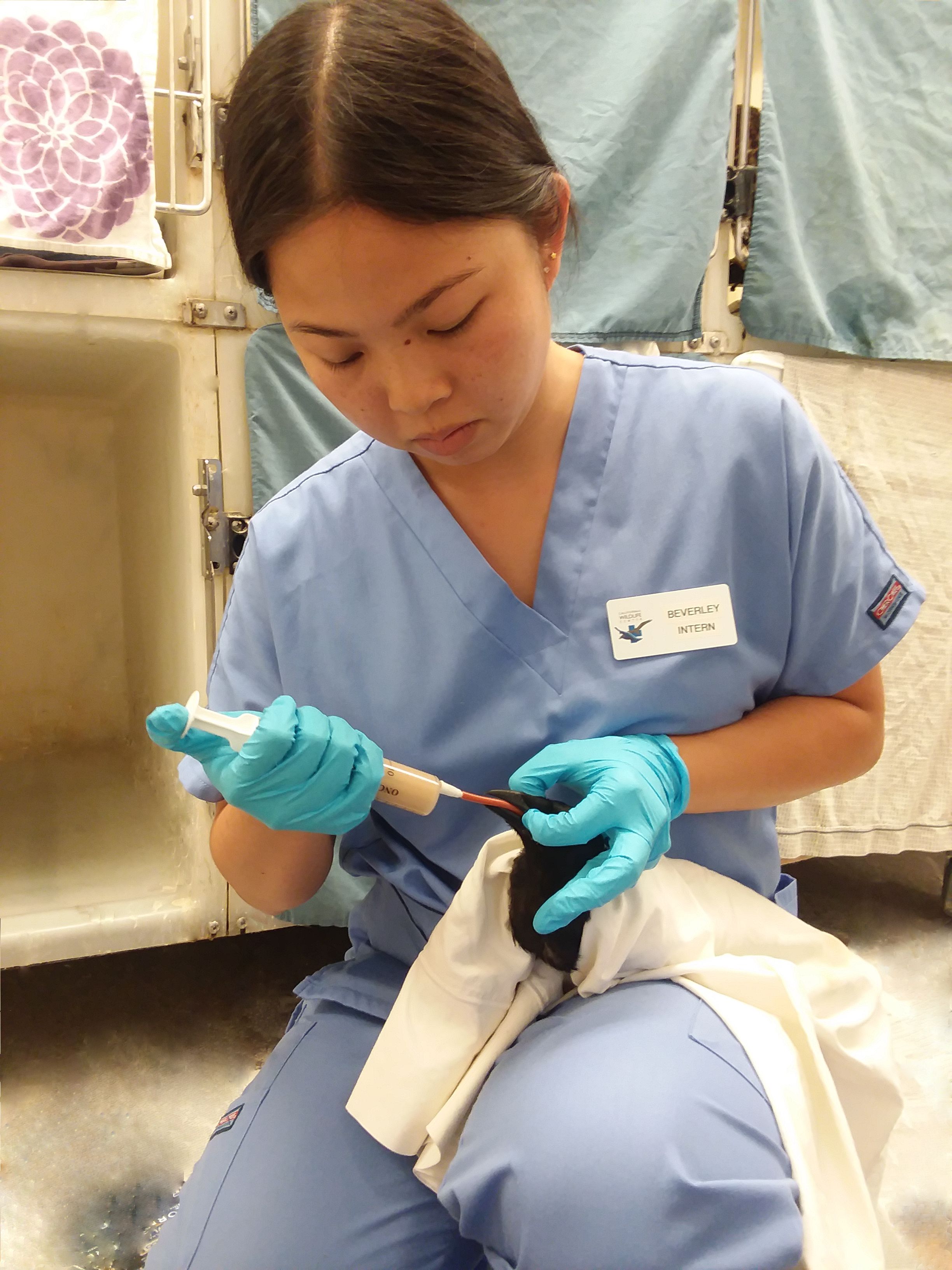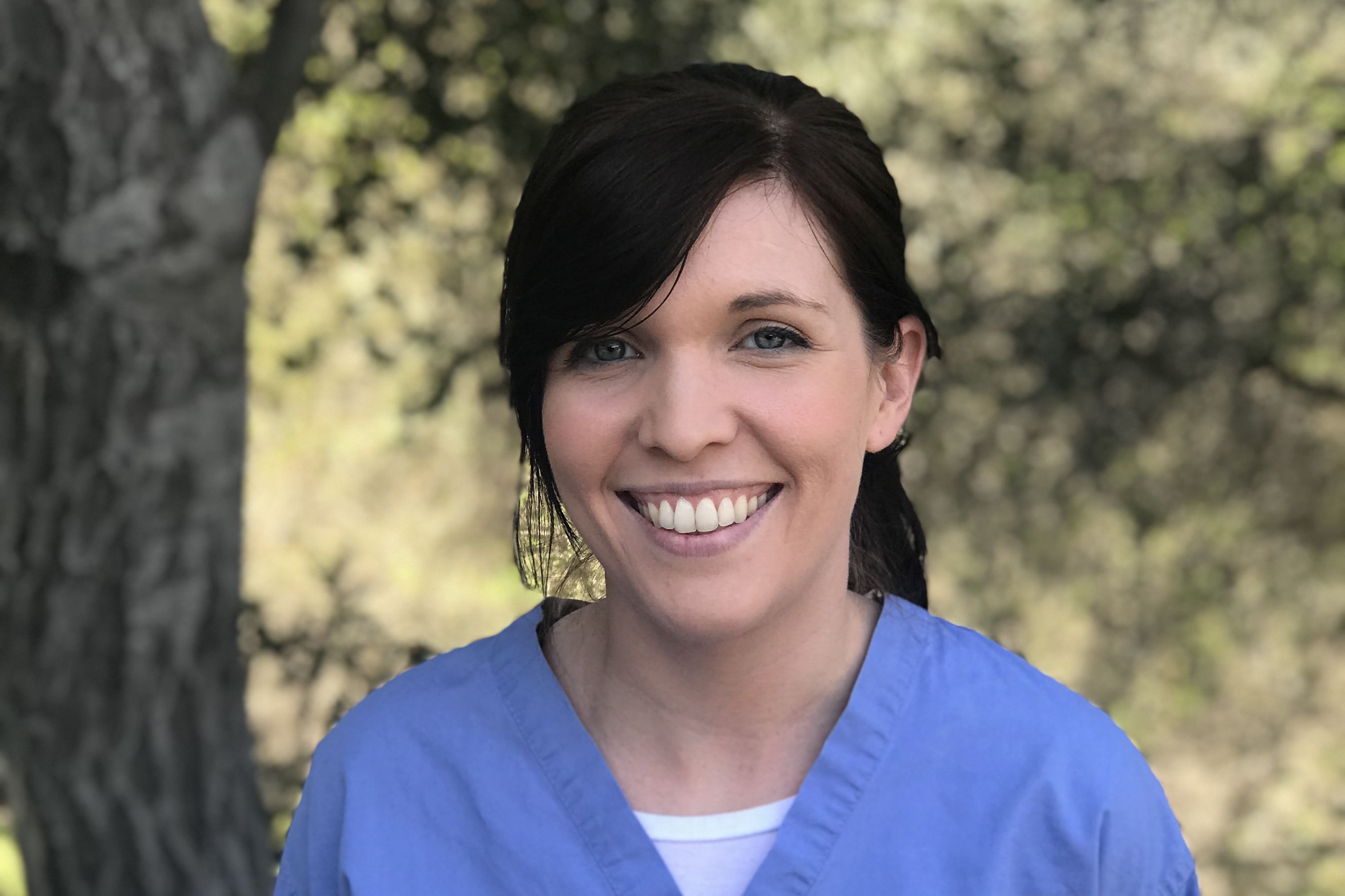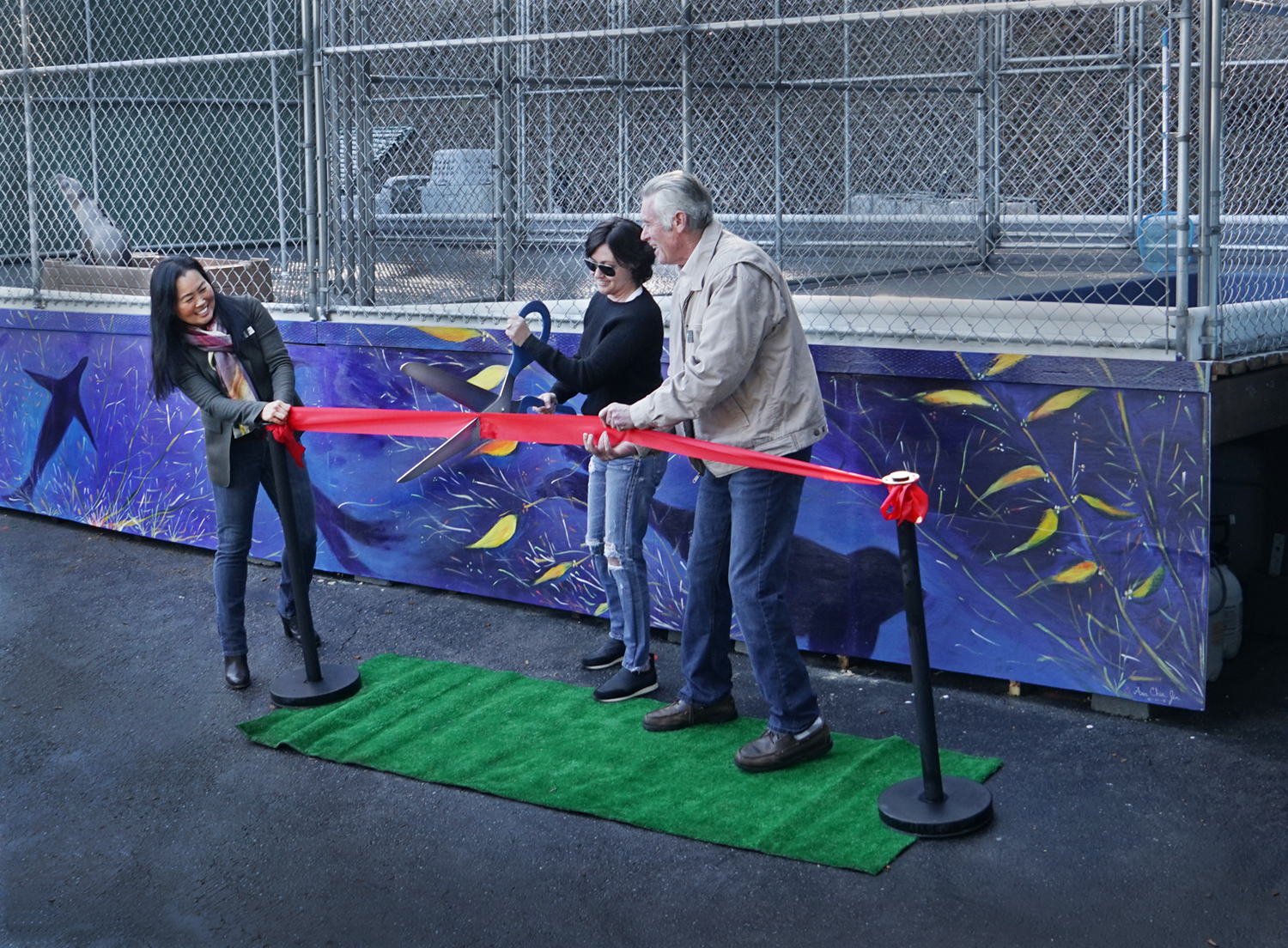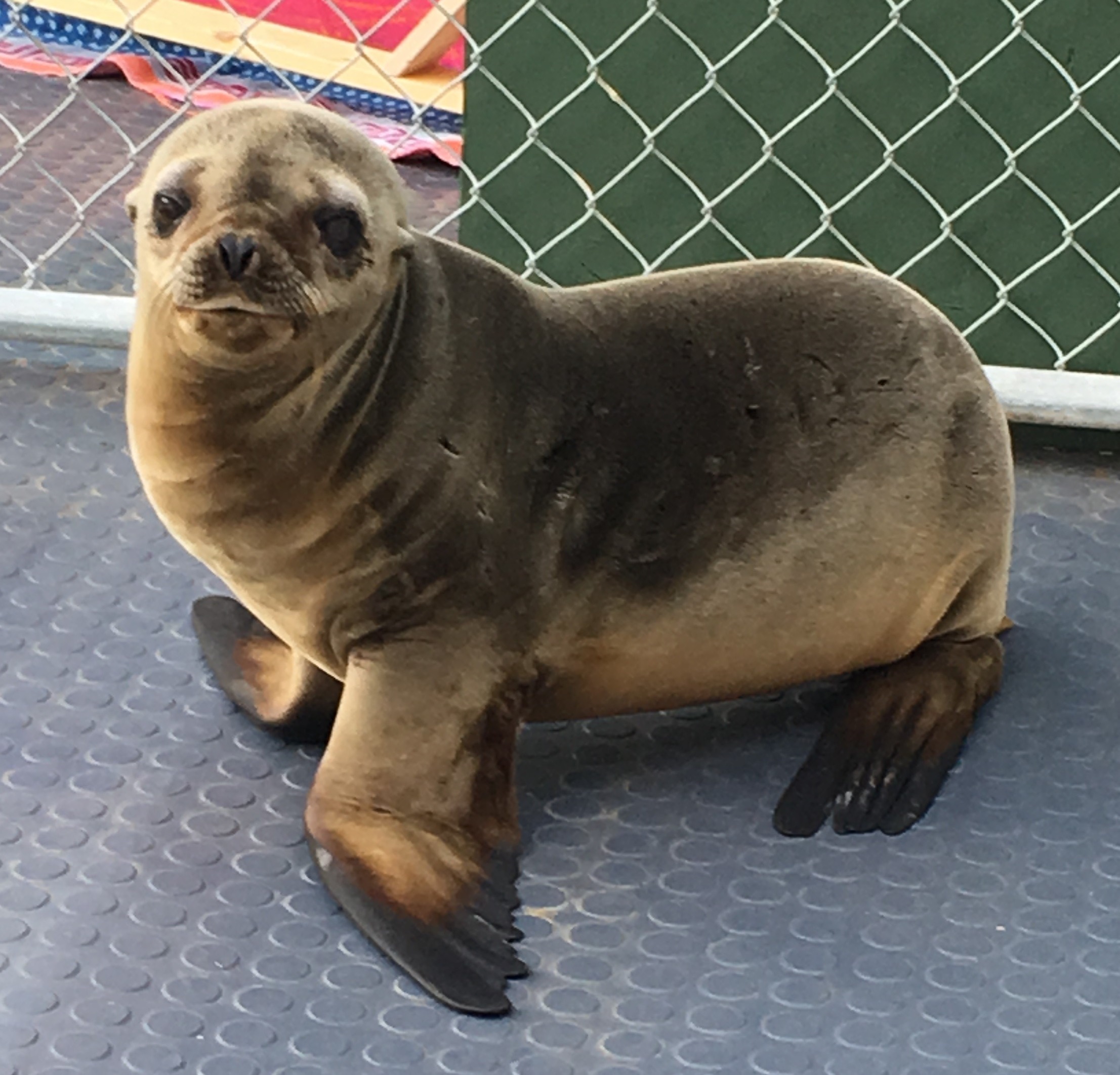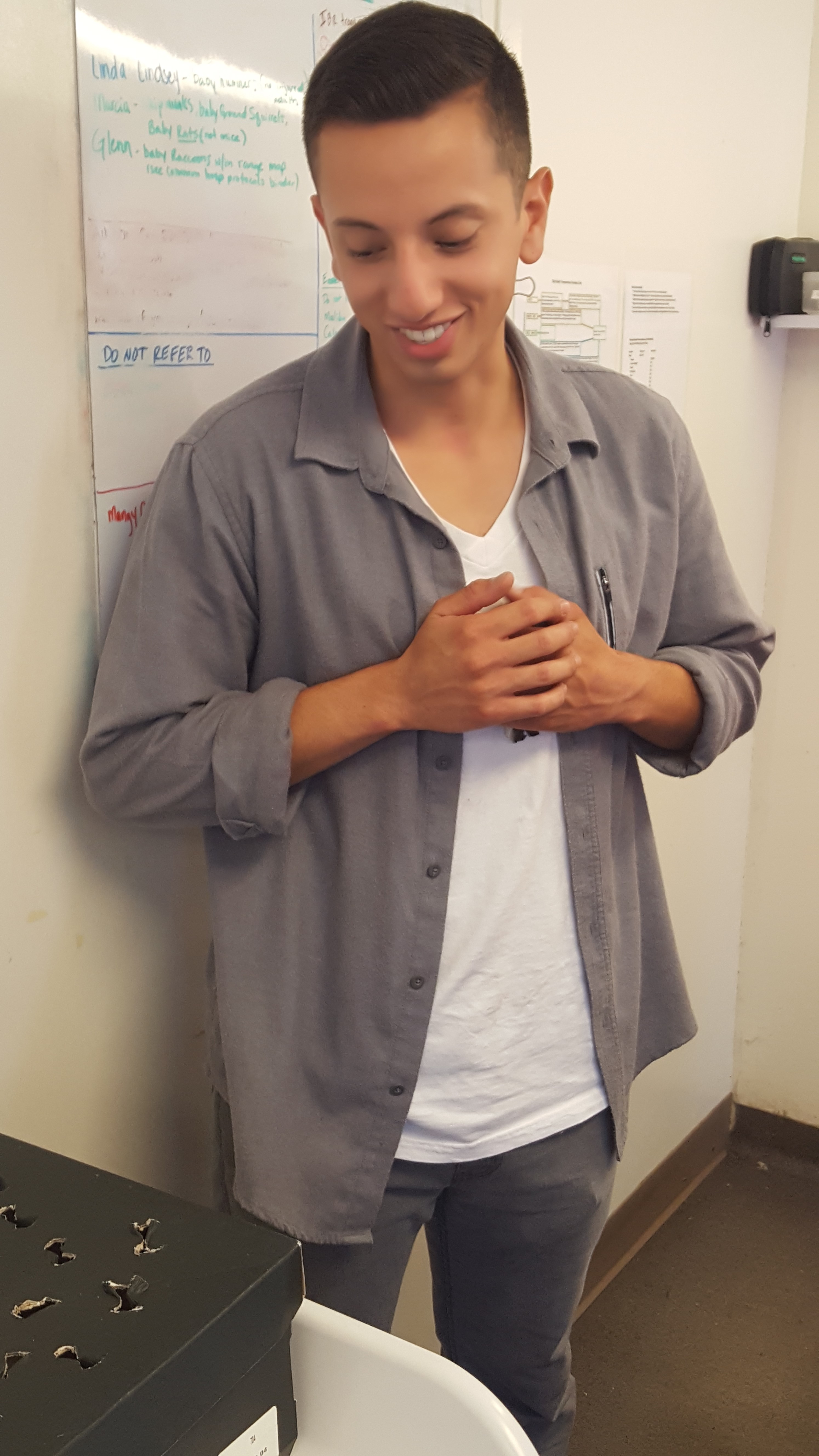California Wildlife Center in the Woolsey Fire
By Jennifer Brent, Executive Director
On Thursday November 8th, around 3pm, one of our California Wildlife Center employees let us know that he had heard on the radio that there was a wildfire. We called our local fire station and they said that the fire was a very long way away and it was unlikely that we would be affected. Nevertheless, we took the proactive approach and removed some of the most expensive surgical equipment and reviewed our emergency procedures in case we needed to evacuate. As the fire progressed, we had our staff leave early on Thursday as a precautionary measure.
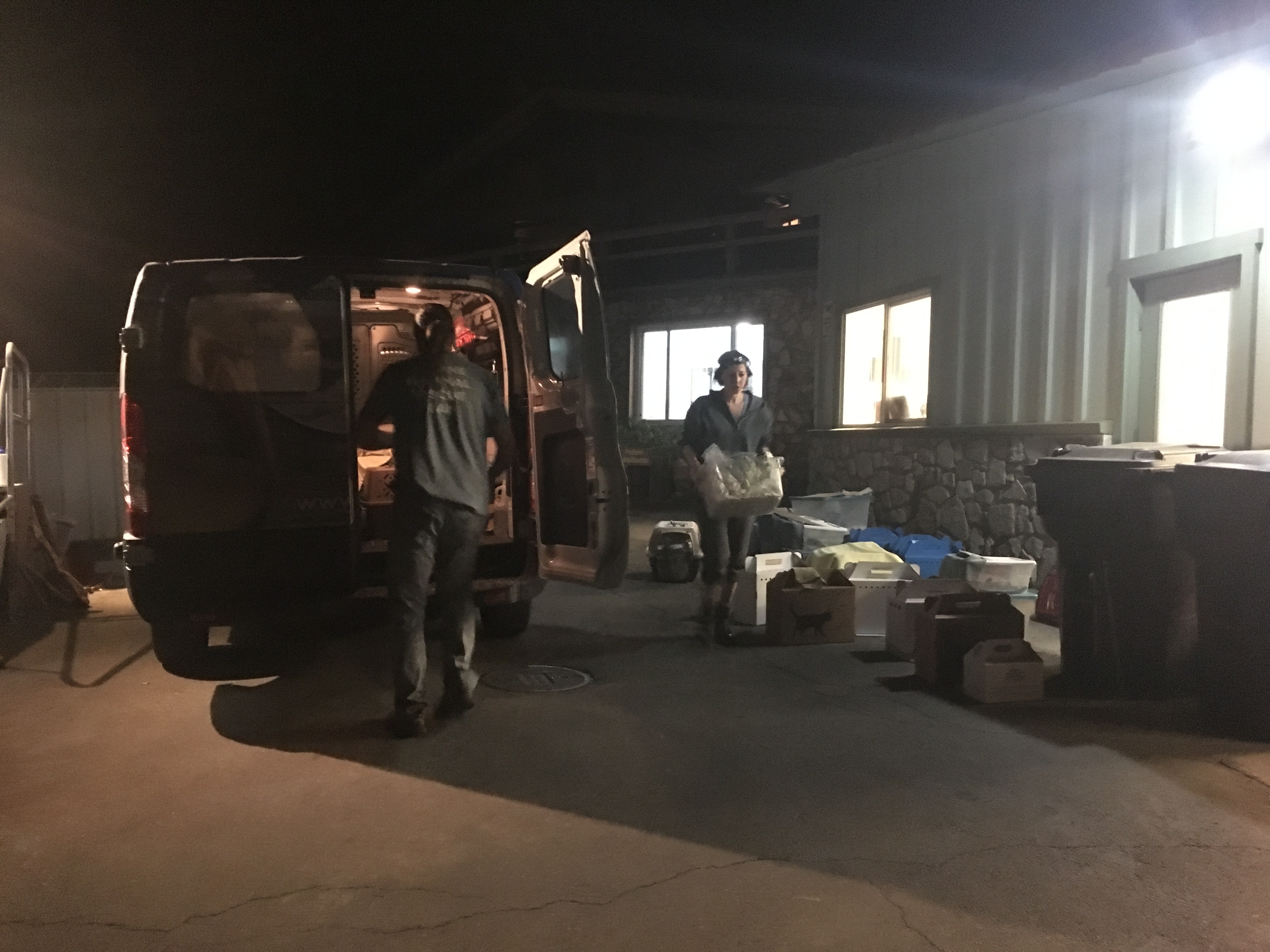
Marine Program Manager Mike Remski and Senior Wildlife Technician Jenn Guess load the CWC van with evacuating patients. Photo by Jennifer Brent
At 2am on Friday November 9th, two of our staff who live in Westlake Village called me, advising me that they were given a mandatory evacuation order. At that point, I made the decision to evacuate the animals out. Given the speed and unpredictability of the winds, we thought it best to move all of our patients from the facility while we still could.
By 3am, three of us gathered at the Albertson’s parking lot, just off of the 101 at Las Virgenes. We were not alone. In fact, we were surprised to see many RVs, boats, and more cars than we’d ever seen before in the lot. We set off to California Wildlife Center immediately.
Once we arrived at the Center, we were struck by the silence and the stars, which were shining bright above us—no signs of smoke or fire. We were soon joined by Mike Remski, our Marine Mammal manager. Fortunately due to the season, we did not have any seals or sea lions in our care, so he was able to help us with the avian and terrestrial patients.
We all grabbed flashlights, headlamps, crates, boxes, nets, gloves and began our evacuation procedures. Jenn Guess, our Senior Wildlife Tech was responsible for catching up the animals that were in our lower enclosures. Those are the patients who are closest to release, who are in the process of de-habituation and regaining their strength prior to return to the wild. They include Red-tailed hawks, Bobcats, Mourning doves, Fox squirrels, Virginia opossums, a Burrowing owl, a Merlin and many more. Working with advice from our veterinarian on the phone who couldn’t access the Center from the north due to road closures, we released any of the birds that were on the cusp of being ready to re-enter the wild.
Wildlife Technician Cambria Wells was responsible for gathering those patients who were under care in our ICU. The ICU is where the animals who need attention (medication, visual monitoring or physical check-ups more than once a day) are housed. Cambria gathered those animals and their medications and all of their charts, which track their progress. We loaded everyone up in multiple vehicles and drove quickly out. On our way, we could begin to see the eerie glow of the wildfire approaching from the West.

Fire in Distance. Photo by Jennifer Brent
By 4:30am we were back at the Starbucks, which was open and packed with people. We contacted our evacuation site in Woodland Hills, which is also the site of one of our longtime home care volunteers. She let us know that she was prepared and ready to receive our animals. As we drove down the 101 East, the sheriffs were closing access to the freeway to westward travel.
Little did we know that by 5pm that Friday, our area would be under mandatory evacuation. We are incredibly grateful to have been able to get out all of our animals.

The view from CWC before and after the fire. Photo by Jennifer Brent
As our founder, Aaron Frank said via email to me the other day, “Since our inception we’ve known fire was a threat due to our location and we’ve come close many times. We’ve been fortunate to have been spared and owe a great debt of gratitude to the firefighters who helped save our Center this time and many times before.”
We have been stunned by the support of the community and the current and former volunteers and absolute strangers who have offered to take animals on our behalf and clean up the site.
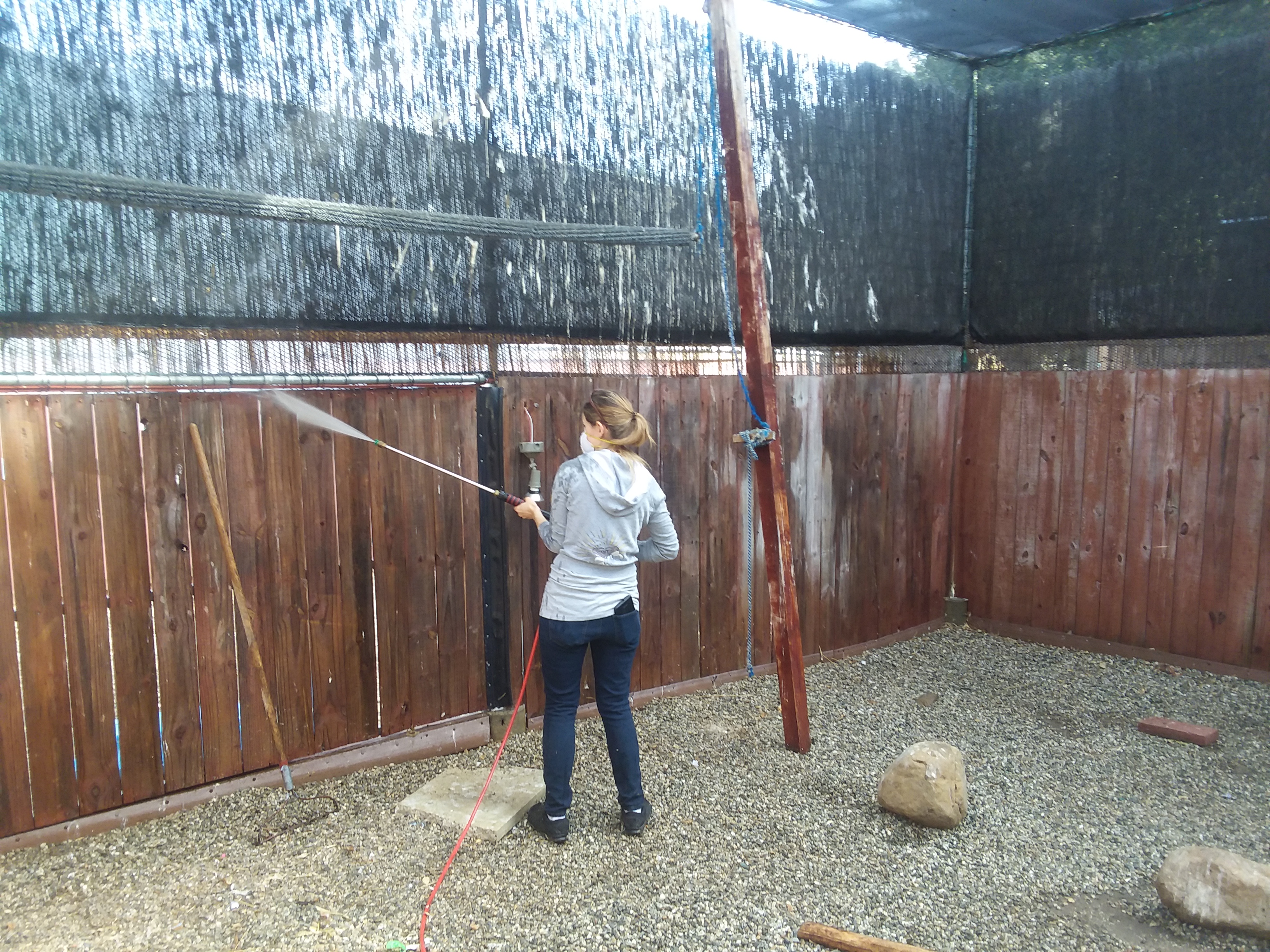
Volunteer Maria Kishchenko power washes one of the aviaries. Photo by Heather Patrice Brown
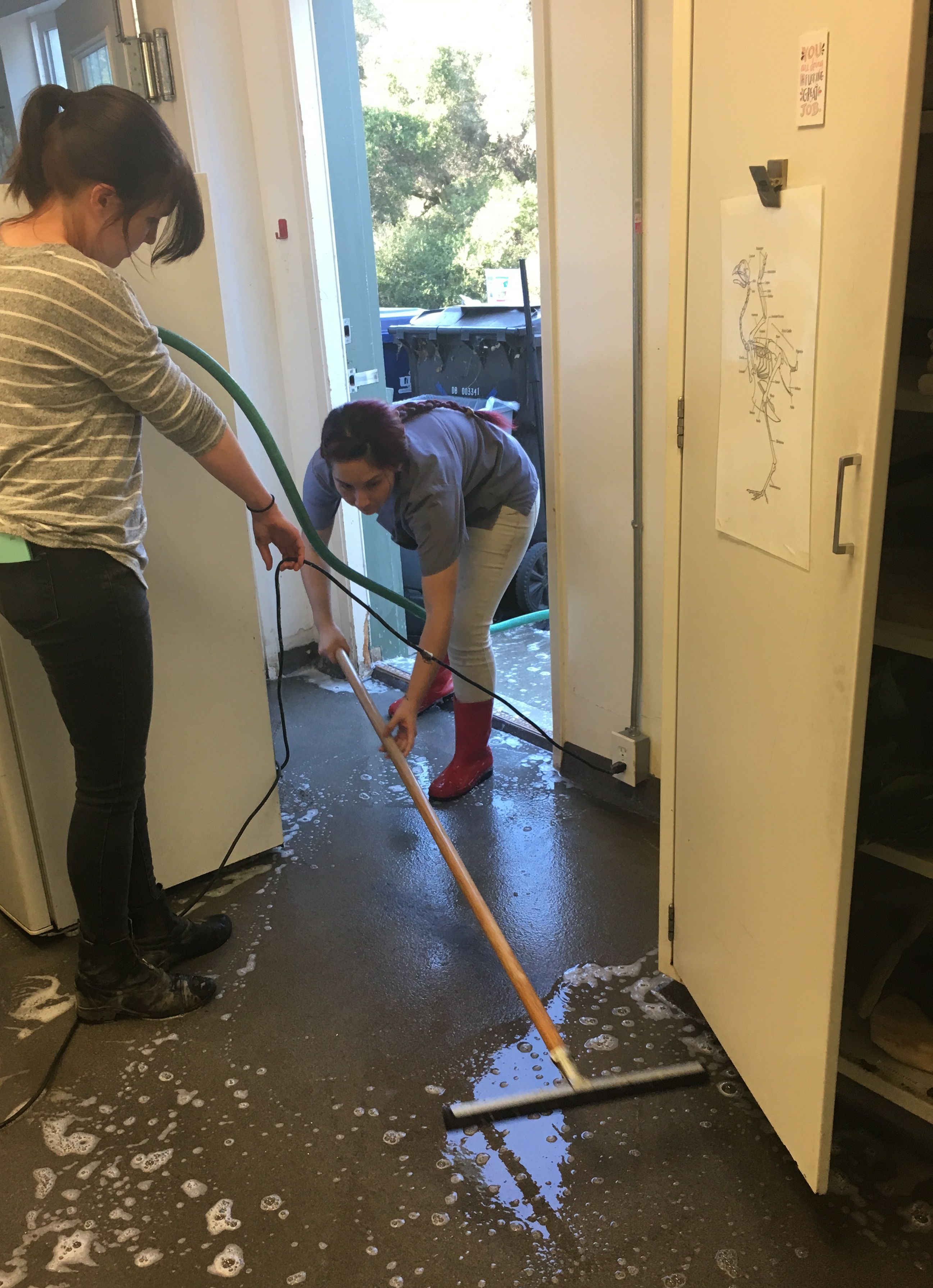
Veterinarian Stephany Lewis and Wildlife Technician Johanna Molina scrub the floor of ICU. Photo by Cambria Wells
On Thursday November 15th, we heard that CWC was accessible on foot so Mike and I hiked in to check on our status. We were shocked and amazed to find our Center untouched. It was exactly as we had left it, green and protected by the beautiful old oak trees that shelter us. Once the roads opened we began moving patients back into the Center and had volunteers come and scrub out all of the enclosures and buildings. It was the first time CWC had been empty since its founding in 1998! We opened for animals on Monday November 19th and are looking forward to being able to once again serve the animals and people of Los Angeles.

